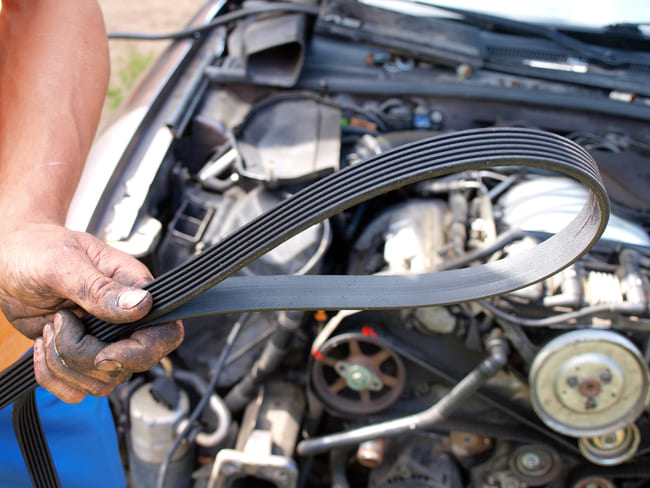Do you suspect that your alternator is failing? It could be due to a bad pulley.

What does an alternator pulley do?
First of all, let’s look at how an alternator works. While the car battery provides the power to start the car, it's the alternator that powers most of the electric components when the engine is running, such as the headlights, power windows, windscreen wipers and radio. It also helps the battery stay charged while you drive. The alternator essentially acts as a mini generator, converting the mechanical energy from the engine into electrical energy.
The device uses a rotor which contains an electromagnet, consisting of coiled wire wrapped around a magnetic metal. The engine drive belt is connected to the alternator via the pulley. As the pulley is driven, it rotates the rotor shaft, spinning the electromagnet. When the electromagnet spins, it generates an alternating current (AC) which is then converted into a direct current (DC) by the alternator’s rectifier and supplied to the car’s electrical system.
Types of alternator pulleys:
- Solid pulley
These were the standard components used in belt drives for a long time. The design is very straightforward as a conventional steel pulley is made to fulfil one sole purpose: to drive the alternator via the belt mechanism. As belt drives have developed, these components have been replaced with more advanced, vibration-damping pulley systems.
- One-way clutch pulley (overrunning alternator pulley/OAP)
The one-way alternator clutch pulley is designed to decrease the load on the belt drive and increase the lifespan of the alternator components by reducing vibrations. It has an internal clutch that enables the alternator rotor to spin and stop at its own speed while being driven in one direction by the belt drive. This characteristic allows it to minimise chirping sounds and vibrations when the motor decelerates rapidly.
- Overrunning alternator decoupler (OAD) pulley
In addition to a one-way clutch, an OAD component features a torsion spring designed to absorb engine vibrations before they reach the rotor. The spring acts like a shock absorber, minimising sounds at low and high speeds.

What causes the alternator to fail?
- Normal wear and tear
- Fluid leaks
- Exposure to the elements
- Thermal damage
- Overworking the alternator when idling
- Wiring issues
It is recommended to get the alternator repaired or replaced as soon as possible to prevent further damage to the device or drive system, as well as to maintain battery life. The car alternator price will vary depending on the specific vehicle model and year of manufacture. In the UK, replacement costs typically range between £100 and £700.
Alternator clutch pulley fault symptoms
- Damage to the belt
A worn or faulty pulley may cause the belt to deteriorate over time due to overheating, tearing or increased friction.
- Burning smells coming from the engine bay
If the failed pulley is rubbing against the belt and generating too much heat, you may detect an unusual smell of burning rubber. It’s important to get the car properly diagnosed.
- Illuminated warning lights
If the alternator isn’t operating as it should be, the vehicle sensors may trigger the car battery or alternator warning light on the dashboard. The lights usually show associated symbols or, in some cases, words like “ALT” or “GEN” to indicate a power problem.
- Dim or flickering headlights
The alternator powers the vehicle headlights with the direct current it generates. If a problem arises, it is likely that the lights will not be as bright as usual or that the lighting will be inconsistent.
- Electrical problems
As mentioned above, a faulty pulley can mess with the car’s electrical system, preventing the AC system, radio, internal heating and other electronics from functioning properly.
- Abnormal noises
A howling or whining noise coming from the drive system may be a sign that the pulley is out of alignment with the belt. It could also be caused by worn bearings or bushings.
When searching for compatible parts online, we recommend using the vehicle’s registration number or the OEM number of the part itself. Bosch alternator clutch pulleys are top-sellers for most popular car makes, including models from BMW, Ford, Peugeot and Volkswagen.
How to remove an alternator pulley
Removing a clutch pulley typically requires a specialised alternator clutch freewheel removal set to block the shaft and two wrenches to pull it away from the freewheel. Check out your car owner’s manual for specific instructions.
TOP products on the subject:








































